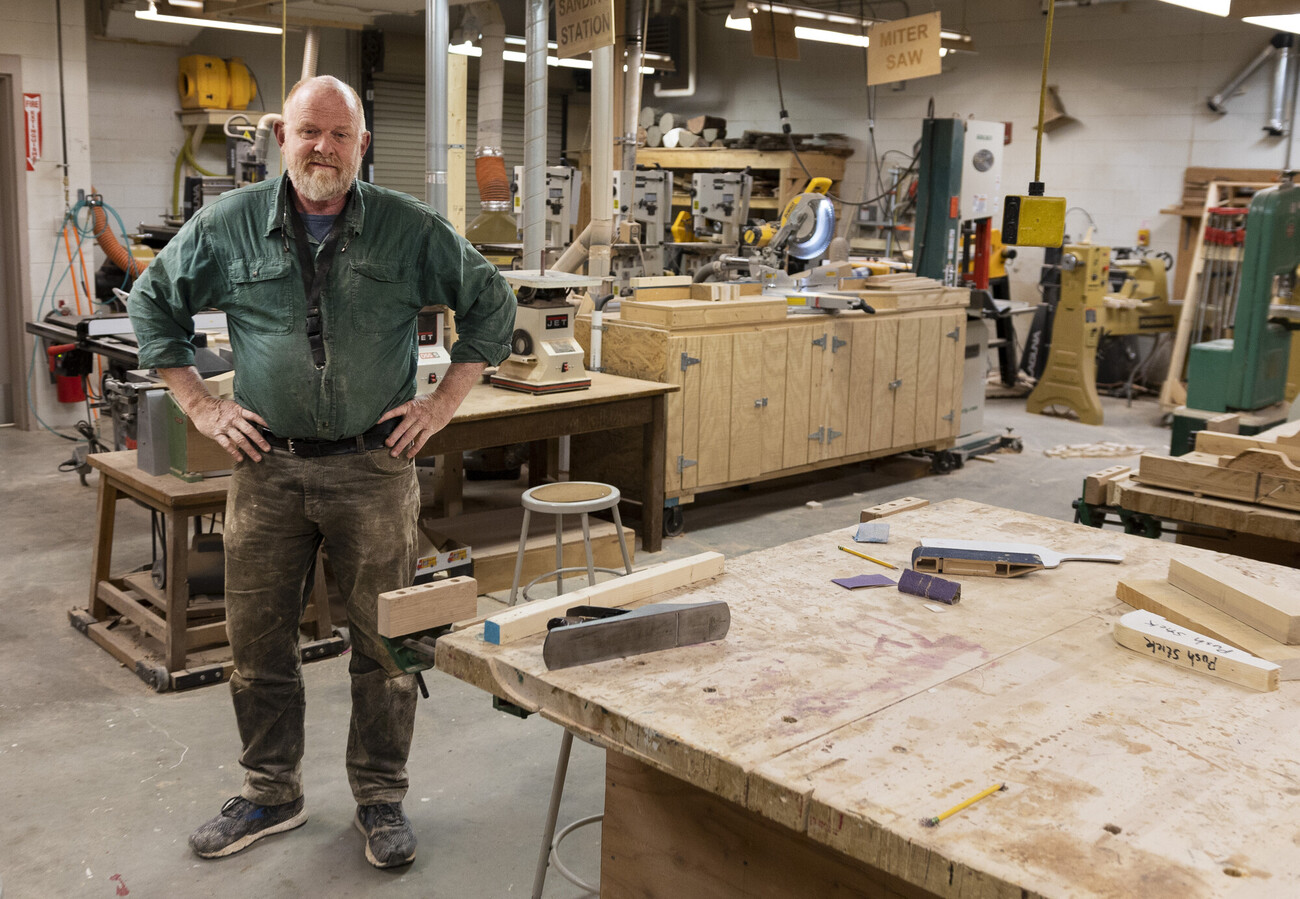At Marblehead High School, a woodworking program is thriving in the 21st century. Students are learning hands-on skills and building anything from cutting boards to a working gear clock.
The cutting board is the first project students get to work on. It gets students to exercise the fundamentals of creating something called a true board, which in geometric terms is a rectilinear prism.
“They have to learn to create that and crate it in a predictable manner to a certain set of dimensions,” said Robert Taylor, who teaches woodshop at Marblehead High School. “Without the geometry you cannot lay out work, you can’t even do more sculptural things without having that kind of basis.”
Students use power tools and a machine called CNC (Computer Numerical Control). The CNC machine computerizes the manufacturing process in which preprogramming software and code controls the movement of production equipment, creating mass-produced items from materials like wood, brass, steel, and aluminum.
For Taylor, safety is important and reminds students that these machines can hurt them.
“These machines have no conscious, they have no desire. They are like the Atlantic Ocean, they are just there,” Taylor said. “If you decide to go for a swim in the Atlantic Ocean and you don’t know how to swim, or you try to swim too far and you’ve never done it before, you’re in a lot of trouble. Same thing here, if you don’t know how these tools work, you’re in a lot of trouble.”
The shop is equipped with everything needed at the woodshop for students to work on assignments, including a stationary machines area with SawStop table saws, work tables, benches, a finishing area, a dust collection system, a safety equipment tools storage, and lumber.
They also have a 1962 Powermatic machine working in perfect condition. Much of the equipment is thanks to a grant from the Marblehead High School Parent Teacher Organization and Friends of Marblehead.
For safety, students are required to wear glasses and encouraged to wear hearing protection.
Taylor tries to choose projects that use less aggressive tools, like sanders.
“There are many ways you can shape things, using various forms of rotaries, sanders, grasps and files,” Taylor said. “But the band saw, the table saw, the jointer – they are a spinning blade, and they use gigs and guides to make sure they keep their hands out of the path of the blade.”
“Another aspect of the class is an increased sense of personal responsibility,” Taylor said. “Yes I’m harping at them all the time, but what I’m really trying to get to the point of is that there, they are aware of what they are doing and that there are consequences.”
The elective is broken down into three levels. In the first level students are taught the fundamentals of woodworking, what the tools are used for, and how to properly use the equipment.
“It’s all about creating that geometry,” Taylor said. “Taking that raw piece of organic material and turning it into a mathematical three-dimensional shape from which you can create almost anything you want. After all, wood is the original engineering material.”
Since Taylor took on the role of woodshop teacher about five years ago, the amount of machinery has doubled, with the goal of every student having the physical experience of working on an assignment.
“My idea was to try to ensure that every student, as much as possible, is occupied,” Taylor said. “Instead of having 13 students watching one student do something, they are all trying to do it, so they all get experience on the machine.”
The class has been growing, with Taylor having about 75 students a year interested in the elective. Classes are 55 minutes long, and teach students that they can make a living working with their hands – and, according to Salary.com, make more than $60,000 a year.

